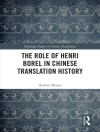Content and Language Integrated Learning (CLIL) is a form of education that combines language and content learning objectives, a shared concern with other models of bilingual education. While CLIL research has often addressed learning outcomes, this volume focuses on how integration can be conceptualised and investigated. Using different theoretical and methodological approaches, ranging from socioconstructivist learning theories to systemic functional linguistics, the book explores three intersecting perspectives on integration concerning curriculum and pedagogic planning, participant perceptions and classroom practices. The ensuing multidimensionality highlights that in the inherent connectedness of content and language, various institutional, pedagogical and personal aspects of integration also need to be considered.
Cuprins
Contributors
Acknowledgements
Rick De Graaff: Foreword: Integrating Content and Language in Education: Best of Both Worlds?
Tarja Nikula, Christiane Dalton-Puffer, Ana Llinares and Francisco Lorenzo: More Than Content and Language: The Complexity of Integration in CLIL and Multilingual Education
Part 1: Curriculum and Pedagogy Planning
1. Christiane Dalton-Puffer: Cognitive Discourse Functions: Specifying an Integrative Interdisciplinary Construct
2. Francisco Lorenzo and Christiane Dalton-Puffer: Historical Literacy in CLIL: Telling the Past in a Second Language
3. Angela Berger: Learning Mathematics Bilingually: An Integrated Language and Mathematics Model (ILMM) of Word Problem Solving Processes in English as a Foreign Language
4. Richard Barwell: A Bakhtinian Perspective on Language and Content Integration: Encountering the Alien Word in Second Language Mathematics Classrooms
Part 2: Participants
5. Emma Dafouz, Julia Hüttner and Ute Smit: University Teachers’ Beliefs of Language and Content Integration in English-Medium Education in Multilingual University Settings
6. Kristiina Skinnari and Eveliina Bovellan: CLIL Teachers’ Beliefs about Integration and about their Professional Roles: Perspectives from a European Context
Part 3: Practices
7. Tom Morton and Teppo Jakonen: Integration of Language and Content through Languaging in CLIL Classroom Interaction: A Conversation Analysis Perspective
8. Ana Llinares and Tarja Nikula: Teacher and Student Evaluative Language in CLIL across Contexts: Integrating SFL and Pragmatic Approaches
9. Pat Moore and Tarja Nikula: Translanguaging in CLIL Classrooms
10. Constant Leung and Tom Morton: Conclusion: Language Competence, Learning and Pedagogy in CLIL – Deepening and Broadening Integration
References
Despre autor
Ute Smit’s main research focus is on English used as a classroom language in various educational settings, by combining micro, meso and macro perspectives. Her publications deal with ELF (English as a lingua franca), CLIL (Content and Language Integrated Learning), EMEMUS (English Medium Education in Multilingual University Settings), teacher beliefs and language policy. Recent projects include ‘ADi BE’, ‘CLIL@HTL’ and ‘INTE-R.LICA.’ She was a co-founding member of the AILA Research Network on CLIL and Immersion Education, and is presently a board member of the ICLHE (Integrating Content and Language in Higher Education) Association.












